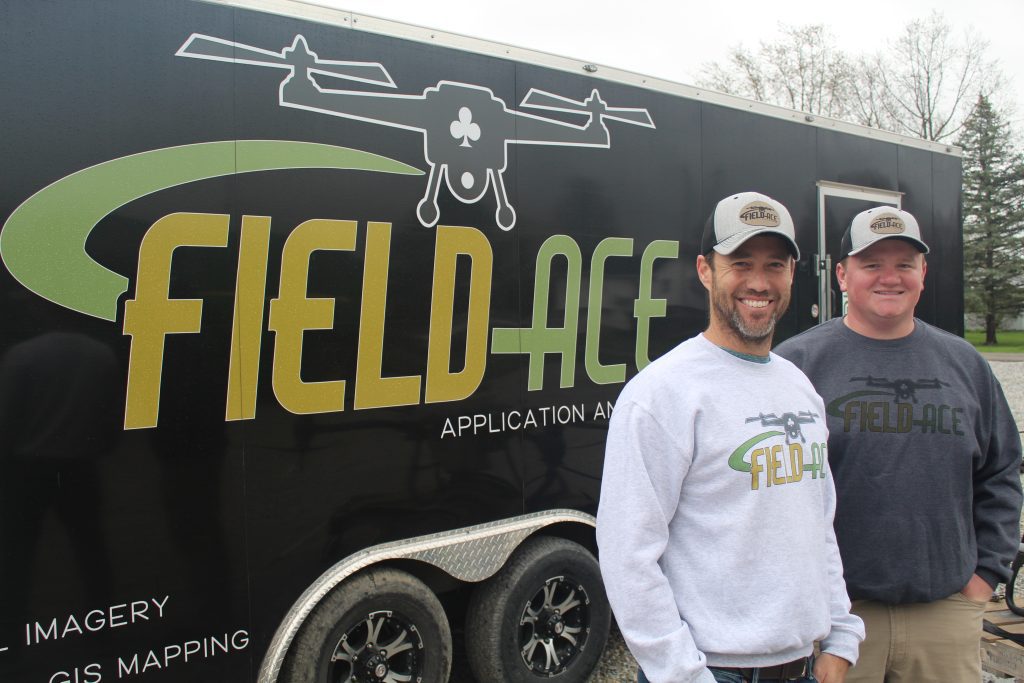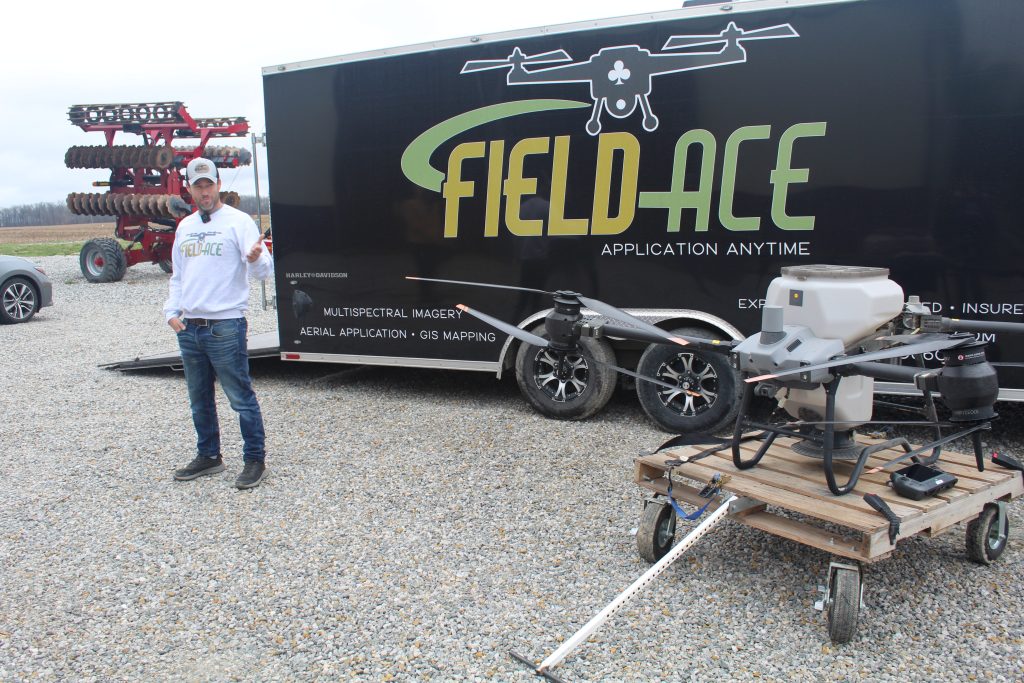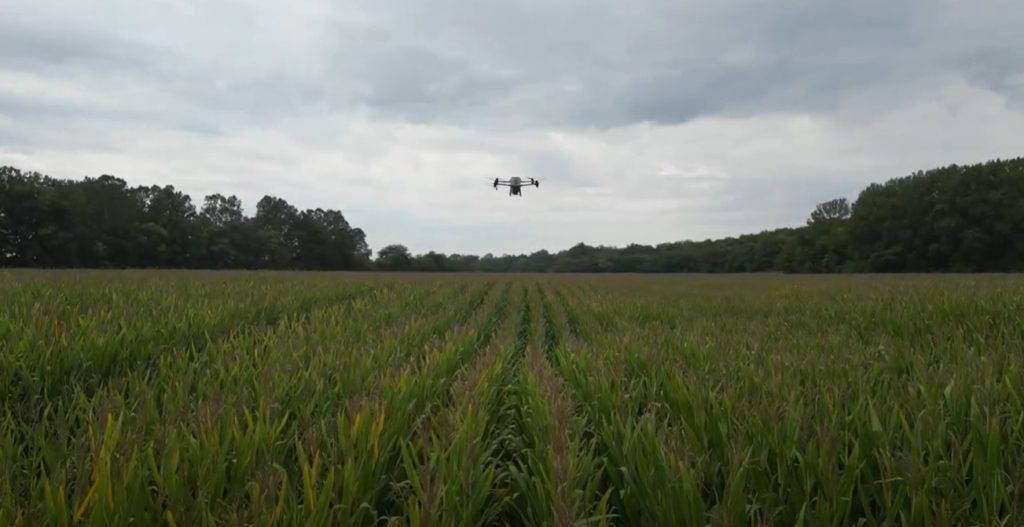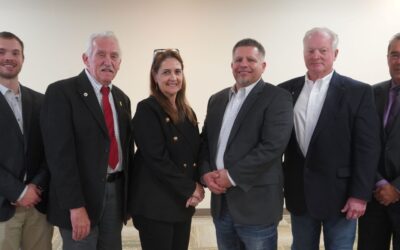Indiana farmer uses drone technology to become more efficient, sustainable
By Amie Simpson
An interest in finding ways to integrate new technology into his farming operation to become more efficient and sustainable led Brian Petty to use drones more readily on his farm and launch a drone application company.

The Alexandria, Ind., corn and soybean grower operates Field Ace, which offers aerial applications of fungicides, cover crop seeding and multispectral imaging, alongside his brother-in-law Noah Dockrey.
“I like to bring technology onto the farm and see how I can make things better,” Petty said. “Drones scratch a lot of that technology itch for me between RTK built into the drones, the controllers and the mapping systems. It’s been interesting, because it fits a lot of things that we already do on farm.”
Petty operates Fields of Dreams Farms and is also in partnership with his brother, Brandon Petty, through ILMG Farms. They have been using the drone technology on their operations for several years and, through Field Ace, began offering services to customers in the summer of 2023.
“We did a ton of experimentation on our farm before we started doing it for hire,” he said. “We wanted to get everything right. When we’re applying, we want to know the spray swath is correct in the field.”
One of the biggest benefits, Petty said, is the extended application windows that allow farmers to be more efficient.
“A lot of times your calm spray days are after a rain event, and you can’t get that ground rig in the field,” he said. “Drone application minimizes soil compaction and allows you to cover ground on those kind of gap days in the weather for the farm.”
He goes on to describe how aerial applications via drones can also reduce the environmental impact.
“For example, compared to an airplane, we can be more precise with applications and get into certain areas that a plane can’t due to obstructions,” he said. “Drones create a draft effect that helps disperse the chemical or seed properly. We don’t over spray or over seed, and we work hard to get those resources where they belong.”
No stranger to conservation
Petty is no stranger to implementing conservation production practices on his farm, and the technology fits right into that. His grandfather began no-tilling in the late 1970s. Today, they no-till all of their soybeans and do a combination of strip till and no-till for their corn.
“Minimizing machinery passes, for example, has reduced labor and saved time and fuel,” he said. “We operate on bare bones equipment for the size operation that we are, and we don’t have several tractors dedicated to tillage and things like that and the drones have even fit into that. For example, in the cover crops, we don’t need another piece of equipment running during the harvest season or just past harvest to get that cover crop seeded. We’re out there aerial seeding in August into September, and that’s worked well for us.”
Petty also previously participated in the Indiana Soybean Alliance (ISA) and Indiana Corn Marketing Council (ICMC) Upper White Cover Crop Program. The Upper White River Watershed is the main source of freshwater for many Indiana residents. Farmers utilize cover crops as one of the methods to keep nutrients and sediments in the field.
The program offers farmers enough cover crop seed and an option for aerial application for a 40-acre field located in the Upper White River Watershed. It was a natural fit for Petty.
A steep learning curve
From regulations to getting the correct settings and more, there’s a lot of work that goes behind implementing drone technology on the farm.

“It’s not a ‘pull the drone out of the box and go’ type of thing, and from the factory they are not set to hit most conditions. Your swath is affected by a lot of different weather conditions in the field, etc., so there’s a steep learning curve to simply set the drone up,” he said.
“I would not say just jump in and go buy drones. It is a process, and it’s not a one-size-fits-all approach. We’ve found that using them as a tool on our farm does have a lot of benefits for us. For example, we’ve found different cover crop mixes that have been successful over the years through aerial application.”
There are also regulatory requirements needed to use drones for aerial applications. Operators must obtain specific licenses and certifications from the Federal Aviation Administration (FAA) including FAA Part 107 and FAA Part 137. Operators also need an aerial commercial applicator license from their state’s regulatory agency to spray chemicals aerially using drones.
“We hired an aviation attorney to help us through the process of becoming certified. There are many things you must go through with the FAA, and I highly recommend anybody considering it to get help,” Petty explained.
“It involves many exemptions and licensing on both the federal and state level. It involves your basic chemical license with an aerial certification on top of that on the state level and then on the federal side, there is a 137 operating certificate and several exemptions that you need under that, as well.”
More information about drones

Another place to go for more information? Petty said there are several groups on Facebook that provide good information about drone use in agriculture.
“For the longest time the information wasn’t publicly available, and we asked questions in those Facebook groups and got connected with the right people,” he said.
Drone technology has evolved a lot. Petty explained that early drones took images with basic software and surveying techniques. Today they have cutting-edge sensors and high-resolution cameras and provide precise and targeted applications.
He thinks drones will continue to evolve.
“These T40 sprayer drones that we’re running now are the first realistic broadacre applicators that they’ve come out with, in my opinion. We can cover 400-500 acres a day with two of them running, and that’s a realistic concept for most farms,” he said.
“It’s not a full replacement for a ground rig, but I think going forward, the technology is going to keep evolving to more automation. (More automation) is something we’re already seeing in drones on the market in addition to larger size and better efficiency overall.”
For more information visit thefieldace.com or email theteam@thefieldace.com.
Posted: September 18, 2024
Category: ICMC, Indiana Corn and Soybean Post - September 2024, ISA, News, Sustainability



